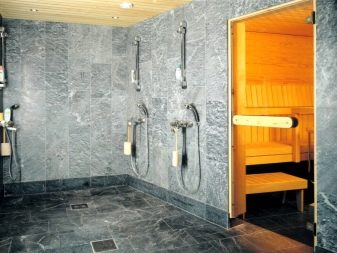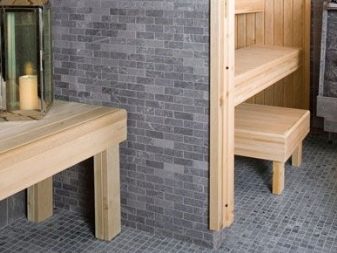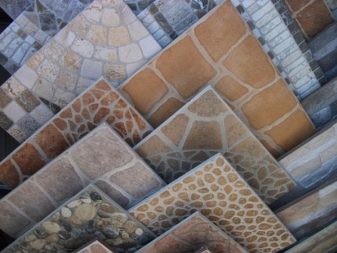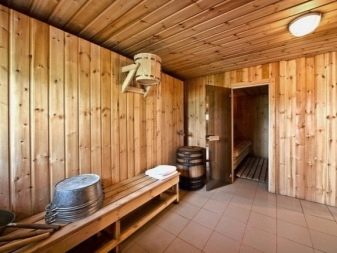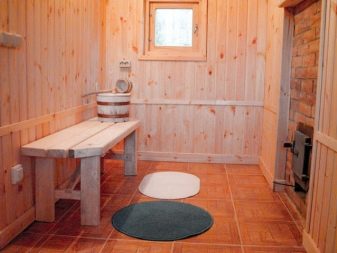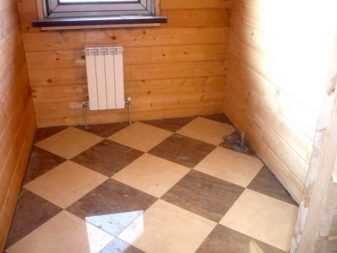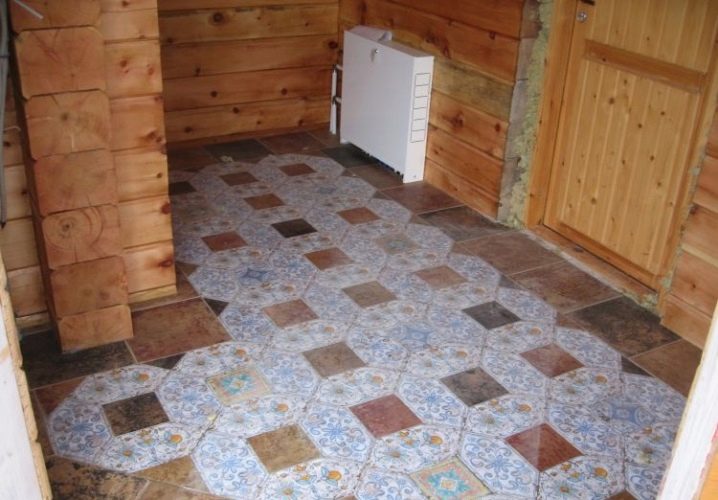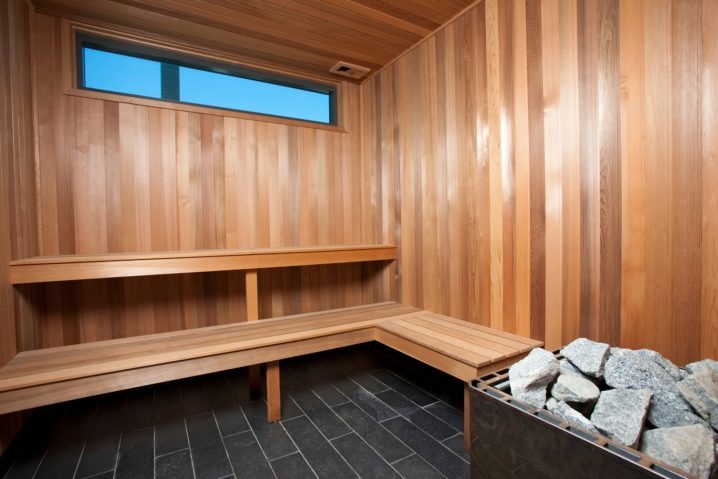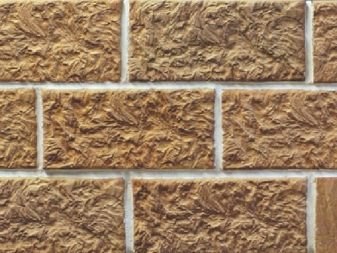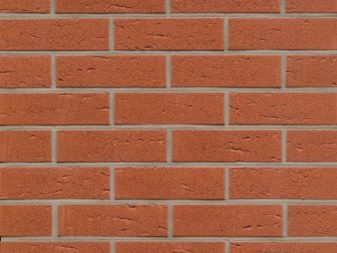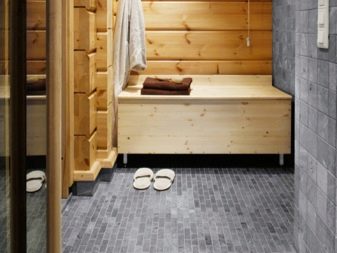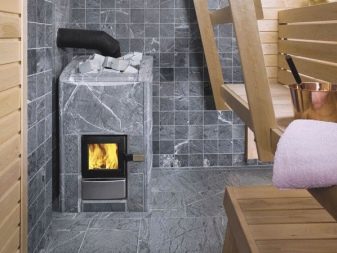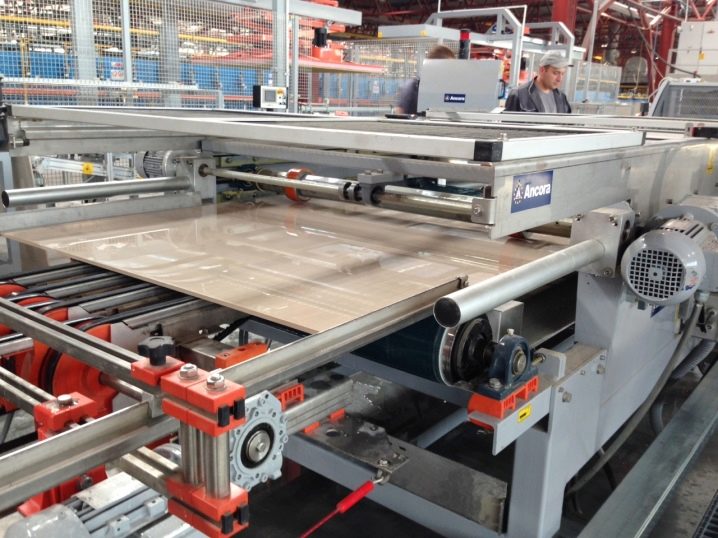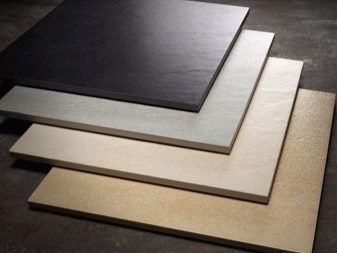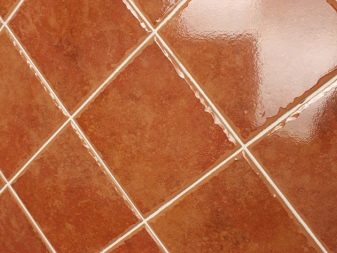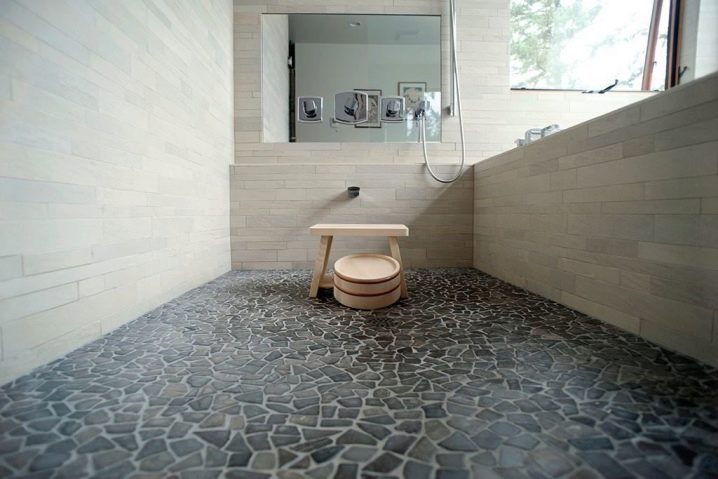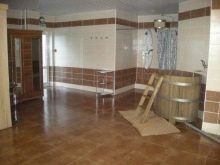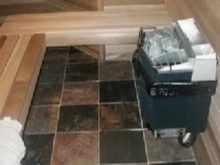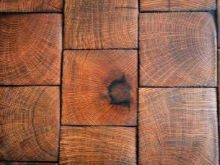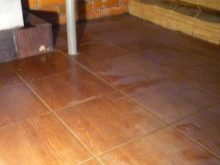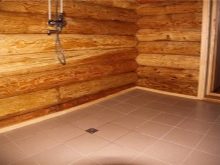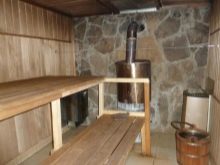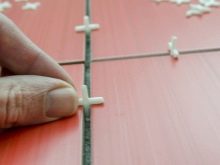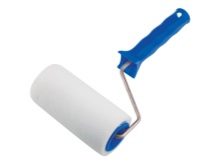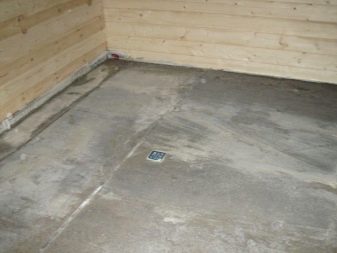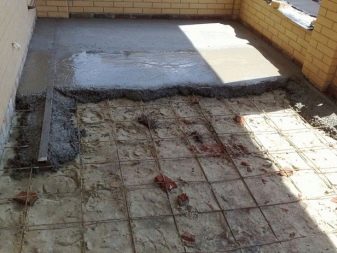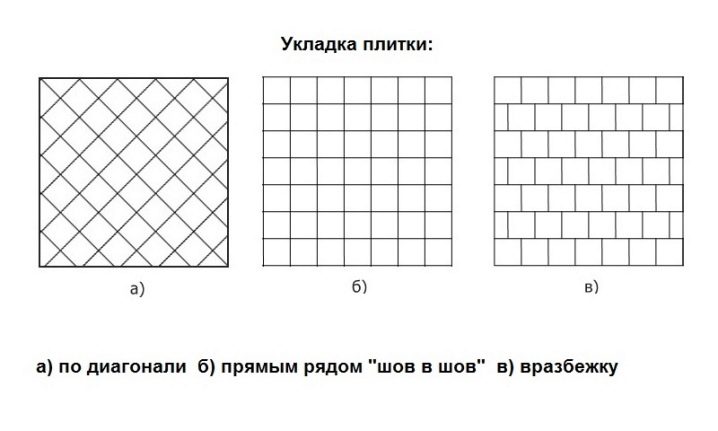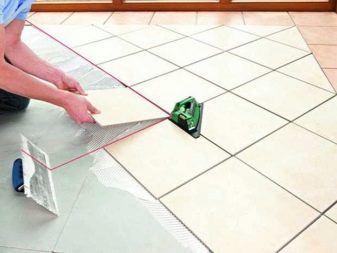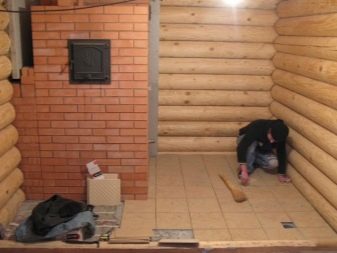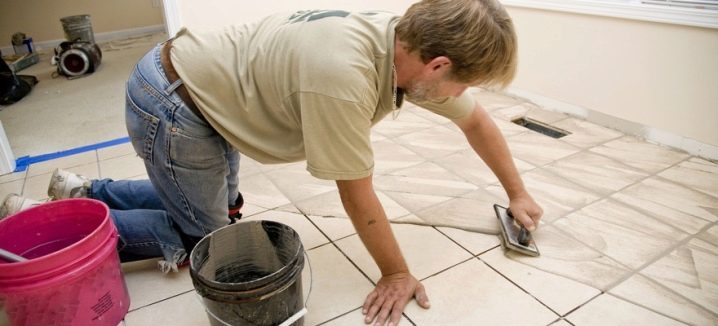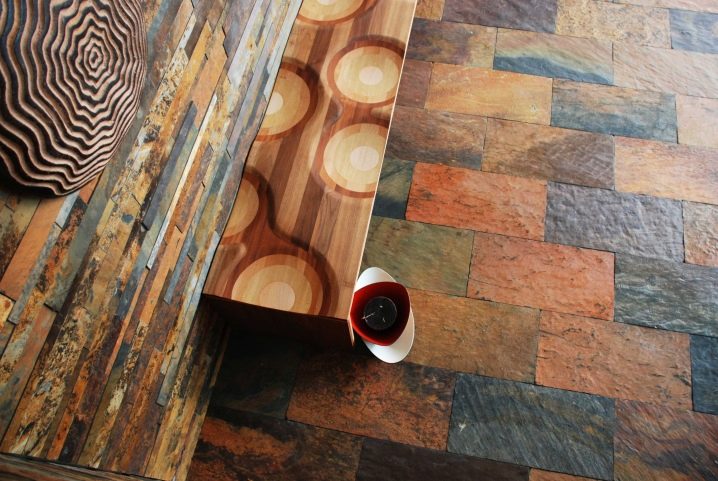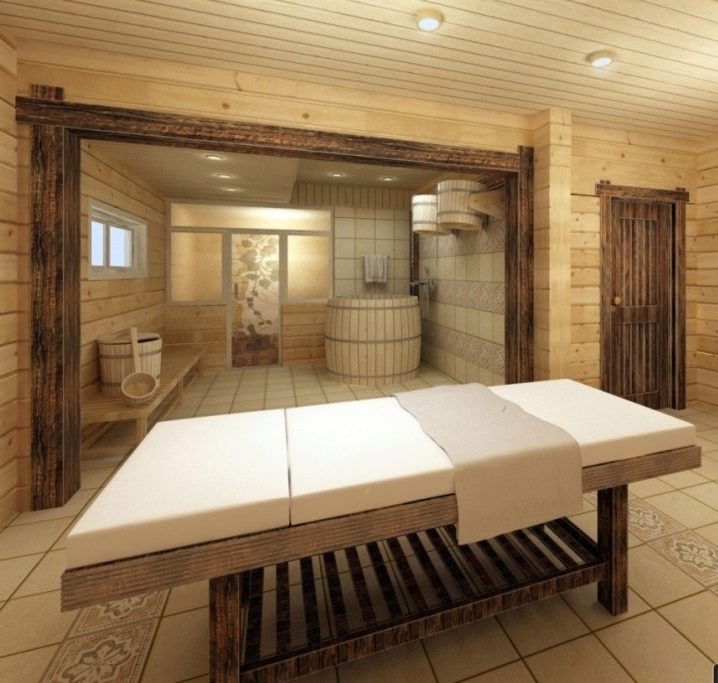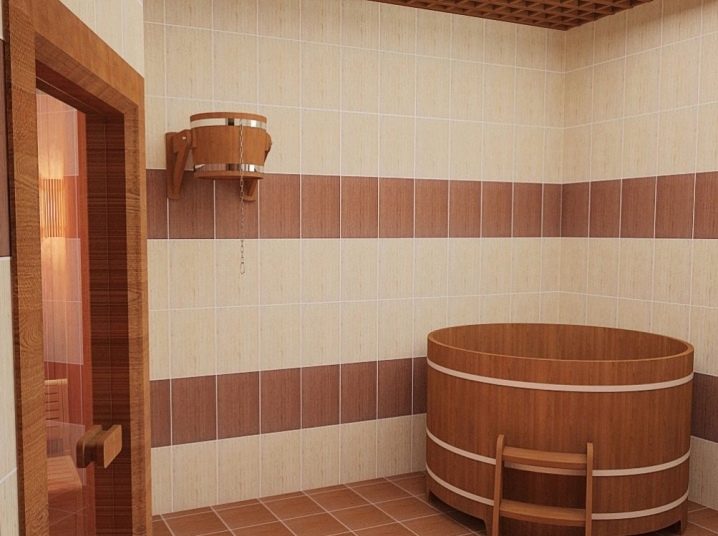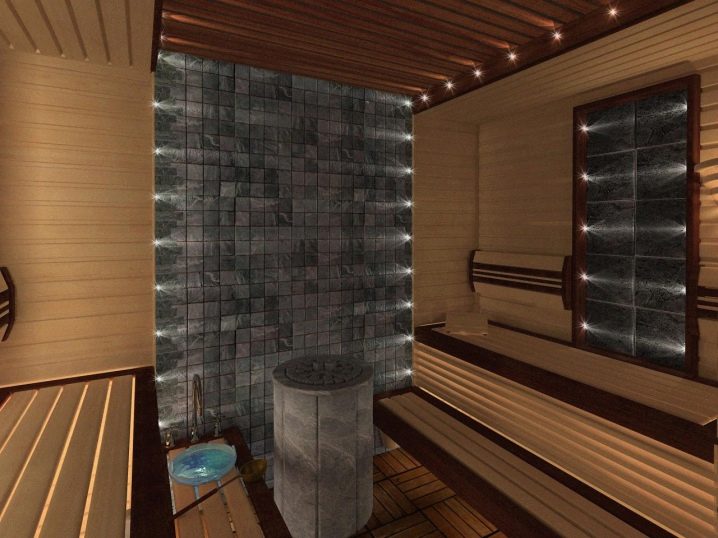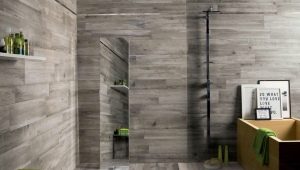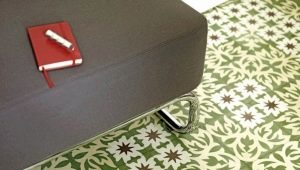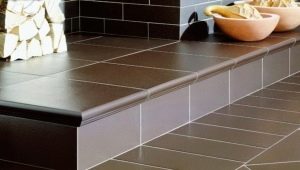Non-slip floor tiles for a bath
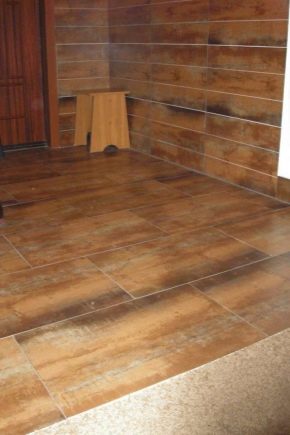
Nowadays, baths and saunas are gaining great popularity. Many people like to visit the steam room because of the pleasant atmosphere and beneficial effects on the body. But in order to spend time with benefit and as much as possible protect yourself from accidents, you need to take great care to finish the floor in the bath.
Special features
Bathrooms are exposed to steam, water and temperature changes. The traditional finishing material for the steam room is wood, but lately, ceramic tiles have been increasingly preferred. The ceramic product is durable, does not require special care, is not afraid of water and high temperature, resistant to chemical and mechanical effects.Ceramic tiles are made of clay and mineral additives, which gives it another important quality - environmental friendliness.
When heated, this material does not emit harmful substances, so it will not harm the body.
How to choose?
The floor covering in the bath should have a number of certain qualities that are important to consider when choosing a finishing material. When choosing, you should pay attention to several factors:
- Moisture resistance. Choosing a tile on the floor in the bath, first of all, you need to pay attention to the degree of moisture resistance of the material. This indicator is directly dependent on the technology of production of tiles and the quality of raw materials used. If the tile is double fired, it will be more porous and less dense.
- Wear resistance. There are five classes of wear resistance - PEI1 – PEI5. The higher the class, the greater the load can withstand the product. The lining material of the bath rooms must be quite durable. For such a room suitable floor tiles of the group PEI2 – PEI3. The thickness of the ceramic plate for the floor can vary from 7 to 11 mm.
- Heat resistance. The coating of the furnace and the adjacent walls should have a high heat resistance. When marking such products are marked with the letter "T".A snowflake on the packaging means that the material is resistant to frost. Frost resistance depends on the degree of moisture absorption - the less moisture the material absorbs, the better it will transfer the temperature with a minus sign. The combination of the snowflake icon and the sun on the package indicates that the tile has a high resistance to temperature changes. This indicator is important if in the winter time the room of the sauna is not heated.
- Relief. For the floor in the bath, you should choose a tile with a raised or rough surface, which will ensure a good grip with the foot and eliminate the possibility of falling on a slippery floor.
It is recommended to choose the tile with the marking R11 – R13, as this is the highest anti-slip coefficient.
- Security. The tile should not release harmful substances when heated.
- Quality. An equally important aspect to consider when choosing a floor covering in a bath or sauna is the quality of the tile. It can be determined visually. A good tile has a smooth, smooth surface without chips and cracks, a smooth edge and a uniform color. It is necessary to attach two tiles with the seamy side to each other, the quality of the product angles and sides will match.
Kinds
There are a lot of types of tiles, it is worth considering the most popular options in more detail.
- Ceramic tile (tile) - This is the most famous type of tile. The production technology consists in forming a plate (a mixture of clay, sand and various mineral additives), roasting and coating with glaze.
- Clinker tiles It is made of certain grades of clay with the addition of coloring matter. It burns once at temperatures from +1200 to + 1450 ° С. Such a tile is heat-resistant, durable and resistant to sudden changes in temperature, so it can be used for facing the oven and floor covering in the washroom.
- Terracotta tiles has a wide range of applications. The main material for the manufacture of this type of tile is white kaolin clay. It does not contain impurities and other additives. The peculiarity of the manufacture is long-lasting (sometimes over 18 hours) firing at extremely high temperatures. This type of ceramic product is highly heat resistant.
- Porcelain stoneware. The basis for its manufacture is clay, in which crushed rocks are added - quartz and spar.They burn tiles under pressure at a temperature of more than + 1250 ° C. The product is durable, finely porous and practically does not absorb moisture, which makes this type of tile suitable for facing the bath.
- Talkohlorite. This type of lining is highly resistant to temperature fluctuations, moisture resistance and low slip coefficient.
Depending on the method of manufacturing tile can be the following classes:
- And - production by an extrusion method. The pasty mass is squeezed through a special form, then cut into fragments;
- B - pressing. The powdery mass can be pressed under high pressure.
The following types of tiles are not suitable for use in bath rooms:
- Ceramic granite is undesirable to use for lining the floor in rooms with high humidity, as it has a smooth surface;
- it is better not to use glazed tiles near the stove or stove. From exposure to extreme heat over time, such a product will crack and become unusable.
Design
An important role in the choice of finishing materials is played by such concepts as color, drawing, texture, size.
- Under natural materials. The tile imitating wooden boards or a natural stone enjoys great popularity. Ceramic product "under the stone" has a matte relief surface, which makes it non-slip.
- Flower design. It is not necessary to finish the whole room tiles with floral patterns. It is better to use this design in part, highlighting the accents.
- Geometric ornament. Such a tile design is suitable for placement in a discreetly laconic style that will make it boring and add originality.
- Oriental patterns. The floor decorated in this style will become the stylistic center of the room. It can be supplemented with soothing colors and subtle details.
Skillfully using the design and size of the tile, you can create a unique style, give the room a zest and visually make it larger.
At the peak of popularity bright natural shades, simplicity of lines. The use of ceramic products of non-standard forms, a variety of textures and their combination will help make such a decoration not boring.
How to lay?
Putting a tile in the sauna with your own hands is quite realistic, if you treat this process with due attention and scrupulously examine all the nuances.The result and reward for the work done will be high-quality and beautiful decoration of the room, which will last for many years. Since the floor in the room is most susceptible to mechanical stress, the installation process must be approached with great precision. First of all, you should prepare the following tools and materials necessary for installation work:
- rubber mallet;
- spatula with teeth;
- gauge crosses;
- glass cutter or tile cutter;
- mixer and container for mixing adhesive solution;
- building level;
- pencil, roller, scraper.
Foundation preparation
Before facing works, the underground is being prepared and waterproofing is being done. You need to make a kind of cake from different layers, which will serve as protection against moisture and temperature drops, namely:
- clean the surface from debris and dust;
- wooden logs should be checked for strength, leaky areas should be replaced, after which the entire surface should be treated with an antiseptic solution;
- in order to protect the wood from moisture, waterproofing should be carried out, for example, treated with latex impregnation.For more waterproofing from the top, you can lay ruberoid or roofing felt;
- after that make a screed. It runs with a slant toward the drain hole;
- as soon as the floor is dry, it can be primed.
An alternative to such a foundation could be a concrete floor on which a tile layer is laid.
Tile preparation
In the case of laying ceramic tiles on a cement solution, before starting work it is recommended to soak the products in water. After soaking the tile does not so intensively absorb moisture from the solution, which contributes to a longer mobility and better adhesion to the surface. In cases where modern adhesive mixture is used for styling, soaking is not necessary, as high-quality glue from leading manufacturers of building materials has high adhesion properties.
Piling
The choice of glue should be taken seriously, given the characteristics of the room. For laying tiles in a bath or sauna, you should choose a moisture-resistant adhesive mixture with good adhesion. There are three options for laying tiles, such as:
- seam in the seam;
- diagonally;
- vrazbezhku.
Begin to lay tile should be from the far corner.If, on the other hand, laying from the center of the wall, you must first mark the middle and begin to lay the tile on both sides of the marked line. If the drain hole is located in the center, then it is better to start laying tiles from this place. It is necessary to apply the adhesive solution on the back surface of the tile and directly on the floor. Tile lightly pressed and tapped with a rubber mallet to seat to the desired level.
To ensure that the gaps between the tiles are the same, special gauge crosses are used, which are removed after the adhesive has dried. In the end you need to revet the remaining places with tiles, trimmed to the desired size. Excess fresh cement mortar is easily wiped off the tile with a damp cloth until it freezes.
Grouting
When the glue solution is completely dry, you can begin to grout the joints. In addition to its decorative function, the grout also performs a number of protective measures: it prevents the formation of cracks and fungus, ensures reliable waterproofing of joints, protects from temperature changes and other mechanical effects.
Beautiful examples in the interior
Properly chosen tiles on the floor in the bath should be embossed, which will ensure safety when using the sauna room.
Ceramic tiles of natural shades will make the bath room cozy.
Ceramic tiles go well with wood trim.
The skillful combination of facing materials plays an important role in the interior design of bath rooms.
How to lay the tile in the bath, see the following video.
